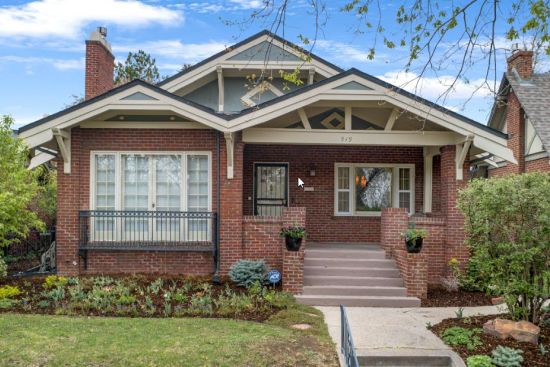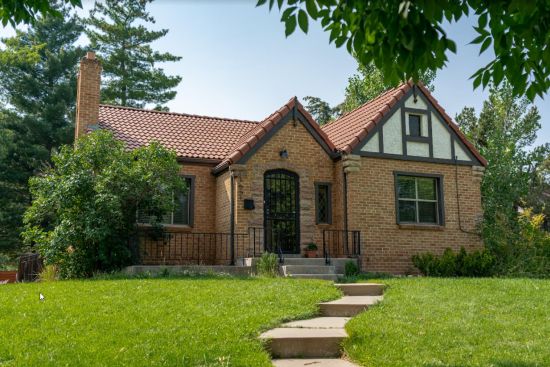5 Steps to Selling Your House in a Crazy Up and Down Market

You have your house on the market and you say you want to sell it, but in this up and down crazy market, do you really?
I find that there are a lot of homes for sale that aren’t really, “on the market.”
What do I mean by that? Ask yourself, “how many showings have I had this month?” “Am I reacting to the feedback I’m getting?” “Am I even getting feedback?”
Are you taking a defensive posture with your broker? Are you thinking of moving on to your second, or even third broker? Chances are, it’s not your broker – it’s denial. We all have moments of denial, maybe I should call it exuberant optimism, in case you feel insulted that I say the “d” word about you and your beautiful house. But there comes a time to wake up and smell the coffee and make the tough decisions.
Step 1 – Decide if you’re committed to listening to the feedback. The feedback from the brokers showing your home and from your own broker. I typically use 30 days and/or 30 showings as a benchmark. If you don’t have an offer after that many bona fide buyers have walked through the house something needs to change. If 30 days have gone by and your house isn’t being shown, then something needs to change. Of course, there are instances when there just aren’t any buyers in the market your house falls into, and then perhaps making changes won’t result in much. However, too many sellers think that’s the case for them, and they agree to make only slight changes. The slight change doesn’t introduce the house to a new market, but it gives the seller a change to say to his broker, “see, I told you there just weren’t buyers out there.” or “You aren’t marketing the house enough, and that’s why there aren’t buyers.” A $3,000 price change is nothing. As, Larry Kendall, the guru of real estate says, “Remember, no amount of marketing will overcome poor pricing.”
Step 2 – Ask your broker for an absorption rate positioning study. Most brokers know how to calculate the absorption rate for their cities and neighborhoods. Have you seen that from yours? It’s an analysis that will give you a very good idea how many months of supply you have in your market. Currently in Denver, we have about 5 months supply in the lower price ranges. This is a good number and indicates market stability. Conventional wisdom says anything over 6-7 months show signs of a weak market. In our high end market we have about 7 years supply. That is most definitely a weak segment of the market. It’s not enough to know the absorption rate. You want to know how you are positioned against the competition. Take the sales rate (absorption rate) and divide by the number of properties currently on the market (including yours.) This will give you your odds of selling this month. If your odds are low, then you need to work hard to rise to the top of the heap. Lower the price so you look the most competitive, consider remodeling, staging, planting flowers, painting. Anything you can do to come out in the top houses.
Step 3 – Calculate your “walking away money.” Sellers are fond of telling us they, “need this amount of money out of my house.” They say they need it for their next house, to pay off debt, or so they don’t have to bring money to the table. Some sellers become shortsighted and reject an offer or don’t negotiate hard enough because of this perceived bottom line. The thing they forget to figure into the calculation is carrying costs. In some cases, houses are selling fast and they might be confident that they will get another buyer right away. But if it took you months to get the first offer, it might take months to get another. And usually the second offer is worse than the first one was. Remember to figure in your monthly carrying costs along with your loan and expenses to get to your “walking away money.” This might make that offer seem a little more appealing.
Step 4 – Keep your house clean. That seems pretty obvious, right? I guess it’s not, or some people have very different ideas of what clean is. I walked into a house today with the worst cat odor in the basement you can imagine. Putrid was my thought. My buyer covered her nose and ran back upstairs. If you live in an area that has a Pottery Barn or a Crate & Barrel, just go walk through those stores for an hour. I’m not suggesting that your decorating style has to be the ubiquitous Pottery Barn style. I am suggesting that while your house is on the market it needs to become a model home. Sometimes uncomfortably so. Hopefully, it’s only for a short while, but think about it as not your house anymore.
Step 5 – Have a crucial conversation with your Broker. The stakes are high and you want to sell your house. Agree to become a partnership. If your broker is exposing the house, and if you’re getting feedback that something needs to change, then you need to do your part. The two of you should lay out a calendar. In this calendar put your broker’s responsibilities in one color – the dates of ads, when it’s posted online, dates of open houses, etc. In another color, put your own responsibilities. This is a two way street, Mr. Seller, it’s not all on your broker’s shoulders. Your responsibility is to react to the feedback without getting emotional or defensive. Don’t say, “they don’t know what they’re talking about, it would only take a few thousand dollars to finish the basement and they could do it the way they want it.” If buyers are passing your house by for finished basements then you have two choices – reduce the price or finish the basement. You choose, but do something. Defensiveness and sneering at “stupid feedback” will not sell your house.
Houses are selling, in all price points. The houses that sell the fastest have the most motivated sellers. Get your house at the front of the line – be proactive not reactive.
Thanks to Larry Kendall, of The Group in Fort Collins, for sharing his wisdom about absorption rate positioning and calculating walking away money.
Want to search for Denver Homes for Sale? Click the link at the top of my page and enter into the best site in Denver for an immediate home search. You can search by neighborhood, by map area or by price!



